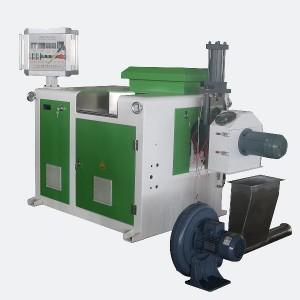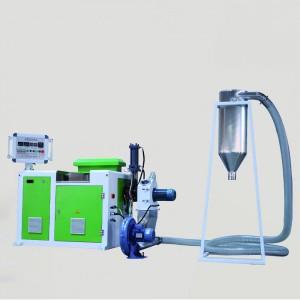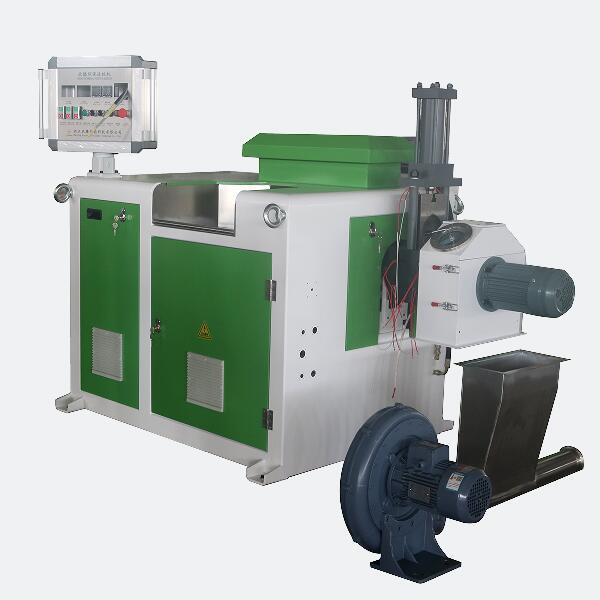
The PE small environmentally granulators significantly lower energy consumption through advanced technologies and efficient design. These machines, including the single screw extruder, utilize high-efficiency motors and variable frequency drives, optimizing energy use. Notably, they achieve a remarkable 40% reduction in energy consumption compared to traditional granulators. Furthermore, the integration of a Waterless Pelletizer Machine and waste heat recovery systems enhances energy efficiency by repurposing excess heat.
Energy Efficiency Technologies in PE Small Environmentally Granulators

High-Efficiency Motors
High-efficiency motors play a crucial role in enhancing the energy efficiency of PE small environmentally granulators. These motors are specifically designed to minimize energy consumption while maximizing output. They utilize advanced energy-saving technology, which leads to improved energy utilization. As a result, these motors significantly reduce energy consumption compared to standard motors.
- High-efficiency motors contribute to:
- Lower energy costs for manufacturers.
- Enhanced sustainability in production processes.
- Improved overall productivity without compromising quality.
The integration of high-efficiency motors in PE small environmentally granulators ensures that manufacturers can achieve low-energy consumption while maintaining high-efficiency production. This technology not only supports operational goals but also aligns with environmental protection standards.
Variable Frequency Drives
Variable frequency drives (VFDs) are another key technology that optimizes energy use in PE small environmentally granulators. VFDs allow for adjustable motor speeds, which can lead to substantial reductions in power consumption. Research indicates that VFDs can reduce energy consumption by 20-30%.
- The benefits of using variable frequency drives include:
- Enhanced control over motor speed and torque.
- Improved energy optimization, potentially extending the lifespan of the equipment.
- Reduction in operational costs, contributing to a lower carbon footprint.
In the latest generation of twin-screw models, the combination of optimized heating zone design and VFD systems can achieve energy savings of about 30%. This advancement highlights the importance of integrating variable frequency drives into production lines, as they not only enhance energy efficiency but also improve overall performance.
| Technology | Description |
|---|---|
| High-efficiency motors | These motors are designed to reduce energy consumption, making granulators more sustainable. |
| Variable frequency drives | VFDs optimize energy usage by allowing adjustable motor speeds, potentially reducing power consumption by 25%. |
| Waste heat recovery systems | These systems capture and reuse heat from the granulation process, significantly lowering energy use. |
| Heat exchangers | Essential for transferring heat from exhaust gases to incoming air or fluids, enhancing energy efficiency. |
By implementing these advanced technologies, manufacturers can significantly enhance the energy efficiency of their operations. The PE small environmentally granulators not only meet production needs but also contribute to a more sustainable future.
Waste Heat Recovery Methods in PE Small Environmentally Granulators

Waste heat recovery methods in PE small environmentally granulators play a vital role in enhancing energy efficiency. By capturing and repurposing excess heat generated during the granulation process, these systems significantly reduce overall energy consumption. Two primary methods of waste heat recovery include heat exchangers and energy reuse mechanisms.
Heat Exchangers
Heat exchangers are essential components in the operation of PE small environmentally granulators. They function by transferring heat from exhaust gases to incoming air or fluids, thereby minimizing energy waste. This process not only improves energy efficiency but also lowers production costs.
- How Heat Exchangers Work:
- They capture waste heat from the granulation process.
- The captured heat is then used to preheat incoming materials or air.
- This preheating reduces the energy required for heating during production.
Heat exchangers work alongside high-efficiency motors to optimize the production process. Their integration leads to improved production efficiency and lower production costs. By utilizing heat exchangers, manufacturers can achieve a more sustainable operation while maintaining high-quality output.
Energy Reuse Mechanisms
Energy reuse mechanisms further enhance the energy efficiency of PE small environmentally granulators. These systems focus on repurposing waste energy for other processes within the production line.
- Key Features of Energy Reuse Mechanisms:
- They capture excess heat generated during granulation.
- The captured energy can be redirected to power auxiliary equipment or heating systems.
- This approach minimizes the need for additional energy sources, leading to cost savings.
By implementing energy reuse mechanisms, manufacturers can significantly reduce their reliance on external energy sources. This not only lowers operational costs but also contributes to a smaller carbon footprint. The combination of heat exchangers and energy reuse mechanisms positions PE small environmentally granulators as a leading solution for energy-efficient production.
Broader Benefits of PE Small Environmentally Granulators
Environmental Impact
PE small environmentally granulators significantly contribute to reducing environmental harm. Their energy-efficient design leads to a notable decrease in greenhouse gas emissions. For instance, these granulators can reduce GHG emissions by up to 33% compared to traditional methods. Additionally, they promote the conservation of finite resources, achieving a 45% reduction in fossil fuel usage.
- Key environmental benefits include:
- Energy-efficient design that reduces greenhouse gas emissions.
- Conservation of finite resources through lower fossil fuel usage.
- Contribution to a circular economy by minimizing waste and repurposing materials.
The use of these granulators in recycling processes also mitigates pollution. By recycling plastics, manufacturers lower the demand for virgin materials, which are often derived from non-renewable sources. This approach not only conserves natural resources but also reduces the energy-intensive production of virgin plastic. Companies like Teel Plastics and KW Plastics have demonstrated significant reductions in CO2 emissions, showcasing the positive environmental impact of adopting PE small environmentally granulators.
Long-Term Cost Savings
Investing in PE small environmentally granulators offers substantial long-term cost savings compared to conventional granulators. Their higher energy efficiency translates to lower energy costs, while durable construction reduces maintenance expenses.
| Factor | PE Small Environmentally Granulators | Conventional Granulators |
|---|---|---|
| Energy Efficiency | Higher efficiency reduces energy costs | Lower efficiency increases energy costs |
| Maintenance Costs | Lower due to durable construction | Higher due to frequent repairs |
| Durability | Lasts 10-20 years with proper care | Shorter lifespan, more replacements needed |
| Total Cost of Ownership | Lower overall due to reduced energy and maintenance | Higher overall due to energy and repair costs |
By minimizing operational costs, these granulators enhance the overall profitability of manufacturing processes. The combination of energy savings and reduced maintenance needs positions PE small environmentally granulators as a wise investment for manufacturers aiming for sustainability and efficiency.
PE small environmentally granulators not only reduce energy use but also enhance sustainability and cost-effectiveness in manufacturing. These machines improve efficiency in recycling and injection molding applications. They optimize material use, which is crucial for sustainable manufacturing. Investing in these technologies leads to a greener future and improved operational efficiency.
| Key Development | Implication |
|---|---|
| Energy-saving motors | Reduce energy consumption and enhance operational efficiency. |
| Smart sensors | Improve monitoring and control, leading to better energy management. |
| IoT-enabled automation | Streamline processes and reduce emissions through advanced technology integration. |
FAQ
What are the main benefits of using PE small environmentally granulators?
PE small environmentally granulators offer reduced energy consumption, lower operational costs, and enhanced sustainability in manufacturing processes.
How do high-efficiency motors contribute to energy savings?
High-efficiency motors minimize energy use while maximizing output, leading to significant reductions in energy costs for manufacturers.
Can waste heat recovery systems be integrated into existing production lines?
Yes, waste heat recovery systems can easily integrate into existing production lines, enhancing overall energy efficiency without major modifications.
Post time: Sep-24-2025
